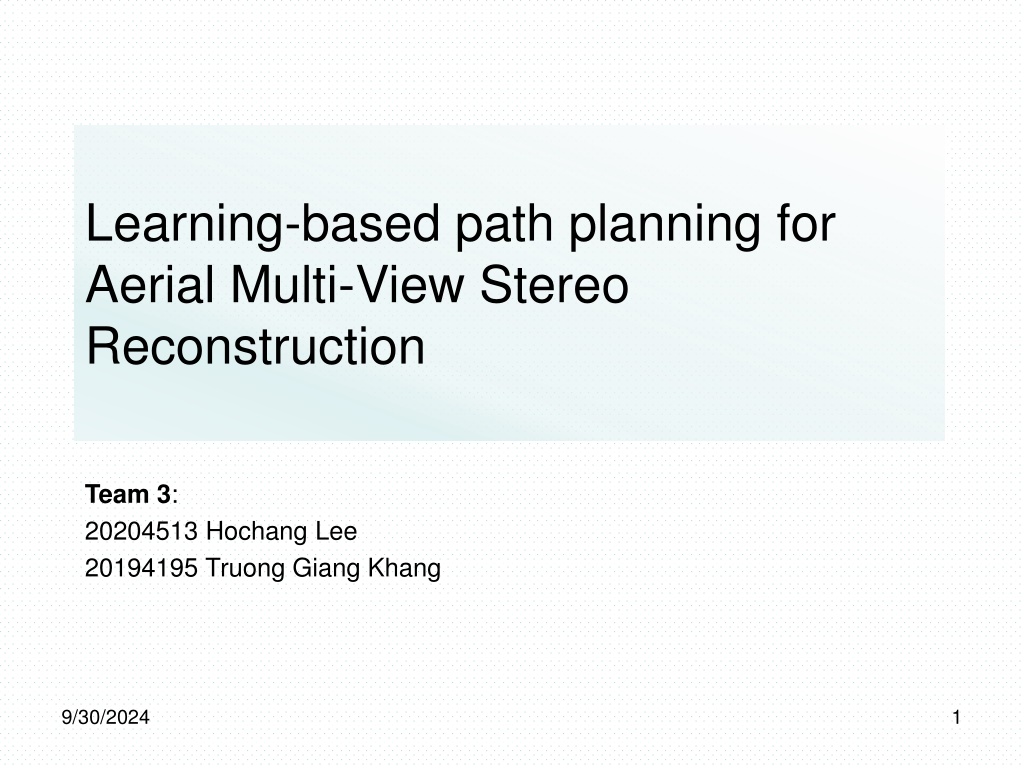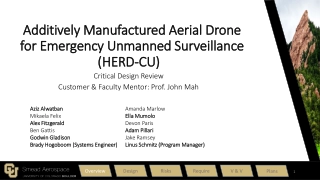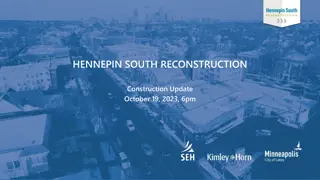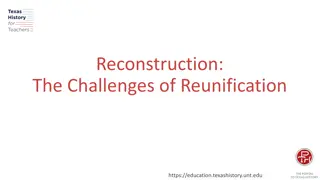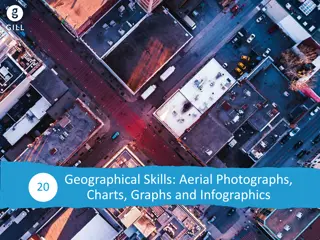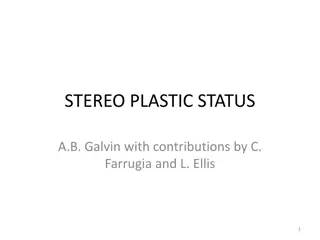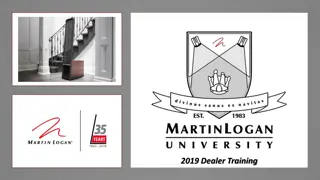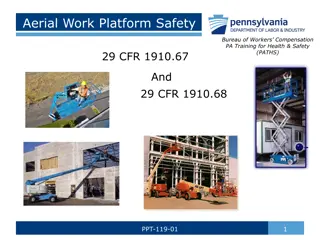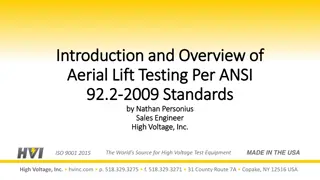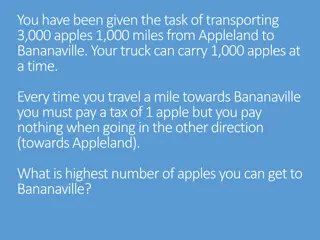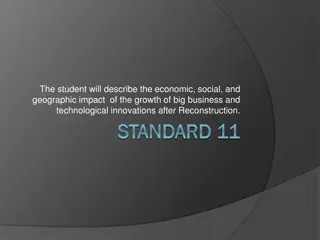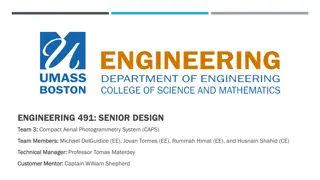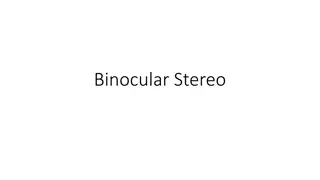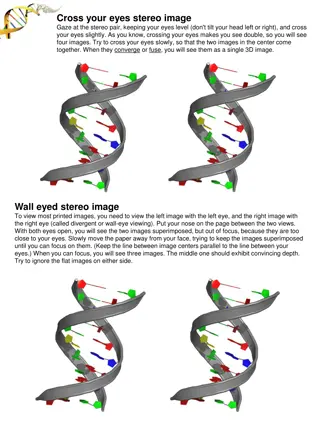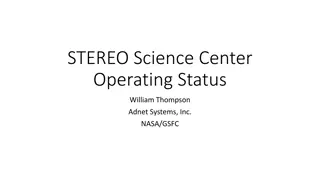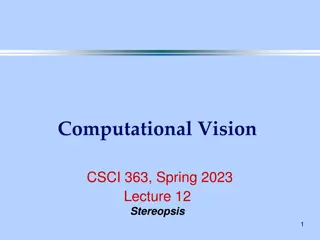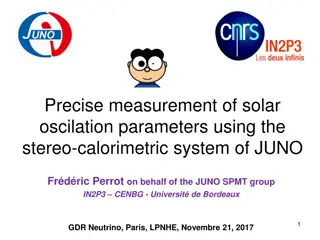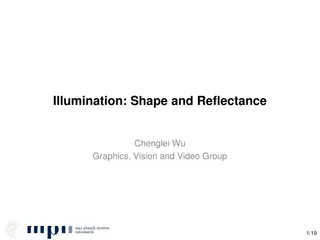Learning-Based Path Planning for Aerial Multi-View Stereo Reconstruction
This project focuses on view selection and path planning to capture high-quality aerial images using drones for 3D reconstruction. The approach involves exploring scene geometry, generating trajectories, and optimizing image capture within travel constraints. Learning-based methods are preferred over heuristic scoring for textureless and occluded surfaces.
Uploaded on Sep 30, 2024 | 0 Views
Download Presentation

Please find below an Image/Link to download the presentation.
The content on the website is provided AS IS for your information and personal use only. It may not be sold, licensed, or shared on other websites without obtaining consent from the author. Download presentation by click this link. If you encounter any issues during the download, it is possible that the publisher has removed the file from their server.
E N D
Presentation Transcript
Learning-based path planning for Aerial Multi-View Stereo Reconstruction Team 3: 20204513 Hochang Lee 20194195 Truong Giang Khang 9/30/2024 1
Contents Introduction Related Works Our Approach Experimental Results Future Works 2
Introduction : Overview Overview of 3D Aerial Scanning: Captured 2D images Images Captured By drones Reconstruction Pipeline View selection & Path planning 3 Reconstructed 3D model
Introduction : View Selection & Path Planning Our study is focused on : View selection and path planning: Choose View points and design an Optimal trajectory for drones to capture the images that can produce a high-quality 3D model Optimal trajectory: Minimum travel budget. Images Captured By drones 2D images Optimal trajectory 4
Introduction : 3D Reconstruction 3D Reconstruction: take a set of images as input and produce a 3D model of scene Reconstruction Pipeline: COLMAP [1], DL-based [2] Reconstruction Pipeline Captured 2D images Reconstructed 3D model 5
Related Works : Common Approach Explore-then-Exploit: Explore: Generate a coarse estimate of scene geometry and scene s free space Fly drone along a default trajectory Put acquired images to 3D reconstruction pipeline Exploit: Use the acquired information above as input Design a utility function based on heuristic Generate trajectory by maximizing the utility function, respecting limited travel budget. Initial trajectory Coarse 3D model Optimal trajectory explore exploit 6
Our Approach : Overview Existing approaches: Define heuristic scores between each view point and surface point However, this approach may not be applicable in cases the surface is textureless or has occlusions Therefore, instead of predefining the rules, we switch over to learning based approaches 8 Textureless Occlusion
Our Approach : Overview Our Method: Predict Reconstructability score for each view by using a DL network Reconstructability: Serve as a proxy for the accuracy of surface estimate produced by each view Similar to definition in [5] process subset of pixels instead of whole image for Multi-View Stereo (MVS) Accelerating MVS 9
Our Approach : Reconstructability Score Define via ground truth depth and estimated depth by a reconstruction pipeline where, ??indicates the pixel p of view image ? ? is the depth value estimated by 3D reconstruction pipeline ? is the ground truth depth value ? is the depth error which is related to reconstructability Define the reconstructability score ? via ? by a form of sigmoid function Hyperparameter ?,? normalize value of R in range (0,1) 10
Our Approach : Explore-then-Exploit Coarse 3D model Explore Default Trajectory Exploit Optimal trajectory and 3D reconstruction models Grid view points Path planning Heuristic Approach to Select View Points for Path Planning - User Made Utility Function are used to guess how useful each view points are at discovering unknown surfaces 11
Our Approach : Explore-then-Exploit Coarse 3D model Explore Default Trajectory Exploit Optimal trajectory and 3D reconstruction models Grid view points Path planning Deep learning model Depth + normal features rendered from coarse model Images rendered from coarse model Predicted reconstructability score maps 12
Our Approach : Training Ground truth (GT) model Coarse model Depth maps rendered from GT Depth maps estimated by COLMAP Images rendered from GT model GT score maps MSE loss dcdcdcdcd Deep learning model Depth + normal features rendered from coarse model Images rendered from coarse model Predicted score maps Training model 13
Our Approach : Network Architecture - RecNet 4 encoding blocks 4 decoding blocks for depth refinement 4 decoding blocks for Reconstructability prediction 14
Our Approach : Loss Function Optimize two losses simultaneously Loss 1: Depth reconstruction loss ????? =1 2 ?? ?? ? ? where, ??is refined depth, ??is ground truth depth Loss 2: Reconstructability prediction loss Use mean squared error loss between predicted map and ground truth ????=1 2 ?? ?? ? ? Total loss: ? = ?????+ 1 ? ????? where ? = 0.3 to control the influence of losses 15
Our Approach : Path planning Preprocessing Construct a ground set C all possible camera poses around the scene. Each camera pose has 2 information: 3D Position and Camera Orientation Sample a set of surface points S on the coarse 3D model Define an objective function for path planning from Reconstructability predictions: Camera poses ?1:?, surface points ?1:? Reconstructability at surface point ??induced by ??: ??????, ???is indicator for visibility of ??with ?? ?(?) = ?=1 ?=1 ? ??????? 16
Our Approach : Path planning P is a trajectory, P = (p0, u0), (p1, u1), ,(pq, uq), where ??is camera position, ??is camera orientation Find optimal path P*: (CP C) Similar to [3], use algorithm in [3] to solve this problem. 17
Experiment Results Dataset for training and test: Simulation dataset - Training : 9 Scenes & Testing : 4 Scenes DTU dataset Training : 97 scenes & Testing : 22 scenes 18
Experiment Results Reconstructability Prediction Compare with other baselines: Unet [7] and ConfNet [8] Evaluation metrics: MAE, RMSE MAE RMSE Simulation DTU Overall Simulation DTU Overall Unet 0.258 0.080 0.173 0.140 0.037 0.091 ConfNet 0.192 0.070 0.134 0.099 0.034 0.068 RecNet (Ours) 0.071 0.181 0.128 0.082 0.034 0.059 Unet [7] ConfNet [8] RecNet (Ours) 19
Experimental Results 3D Modeling : Path Planning Compared with Sub-modular Coverage (Sub-Cov [3]) Same path length budget Captured the set of images in ROS simulation Reconstruction Pipeline : CasMVSNet Constructed 3D Models with Coverage Paths (a) Sub-Cov (b) Ours 20
Experimental Results 3D Modeling Qualitative results Scenario 1 (Notre-Dame de Paris) Scenario 2 (Alexander Nevsky) (a) Sub-Cov (b) Ours 21
Experimental Results 3D Modeling Quantitative comparison Our method had better performance in Precision, Recall, and F-Score Sub-Cov scans the entire surface evenly, but our method scans more low-score surfaces. Improvement in Modeling Performance Effective for scanning complex structures (a) Sub-Cov (b) Ours Scenario1 Scenario2 Precision Recall F-Score Precision Recall F-Score Sub-Cov 0.8172 0.7257 0.7687 0.8628 0.8836 0.8731 Ours 0.8302 0.7922 0.8108 0.8734 0.9062 0.8895 Precision : Percentage of reconstructed points that lie within threshold distance to the ground truth Recall : Percentage ground truth points that lie within the threshold distance to the reconstructed points F-Score : Mean between the Precision and Recall 22
Conclusion Conclusion Proposed a learning-based approach for path planning in Aerial 3D Scanning. Achieve a good performance for both reconstructability prediction and 3D reconstruction. Future Works: Compare with more path planning methods Evaluate on the real-world scenes. 23
References 1. 2. https://colmap.github.io/ Yao, Yao, et al. "Mvsnet: Depth inference for unstructured multi-view stereo." Proceedings of the European Conference on Computer Vision (ECCV). 2018. Roberts, Mike, et al. "Submodular trajectory optimization for aerial 3d scanning." Proceedings of the IEEE International Conference on Computer Vision. 2017. Smith, Neil, et al. "Aerial path planning for urban scene reconstruction: a continuous optimization method and benchmark." (2018). Hepp, Benjamin, Matthias Nie ner, and Otmar Hilliges. "Plan3d: Viewpoint and trajectory optimization for aerial multi-view stereo reconstruction." ACM Transactions on Graphics (TOG) 38.1 (2018): 1-17. Hepp, Benjamin, et al. "Learn-to-score: Efficient 3d scene exploration by predicting view utility." Proceedings of the European Conference on Computer Vision (ECCV). 2018. Ronneberger, Olaf, Philipp Fischer, and Thomas Brox. "U-net: Convolutional networks for biomedical image segmentation." International Conference on Medical image computing and computer-assisted intervention. Springer, Cham, 2015. Tosi, Fabio, et al. "Beyond local reasoning for stereo confidence estimation with deep learning." Proceedings of the European Conference on Computer Vision (ECCV). 2018. 3. 4. 5. 6. 7. 8. 24
